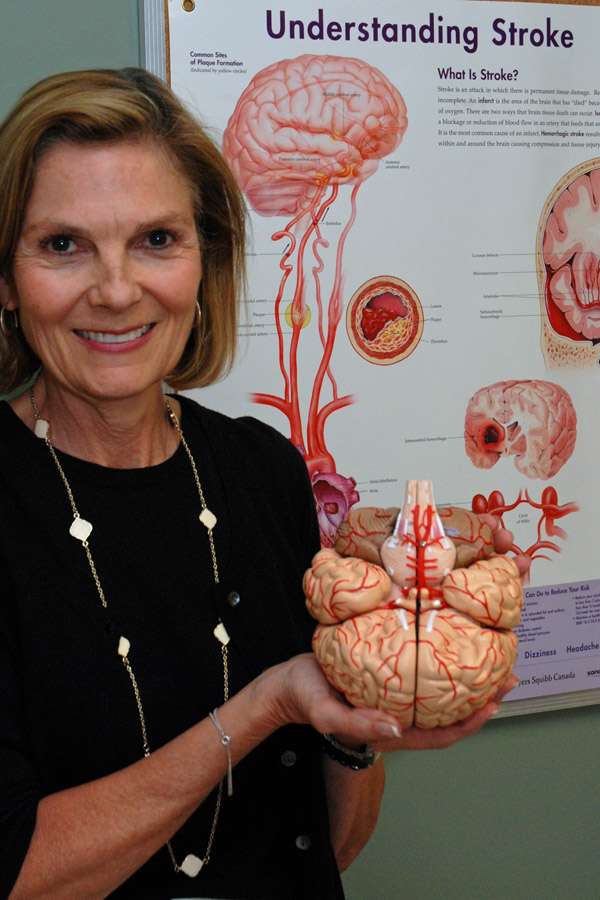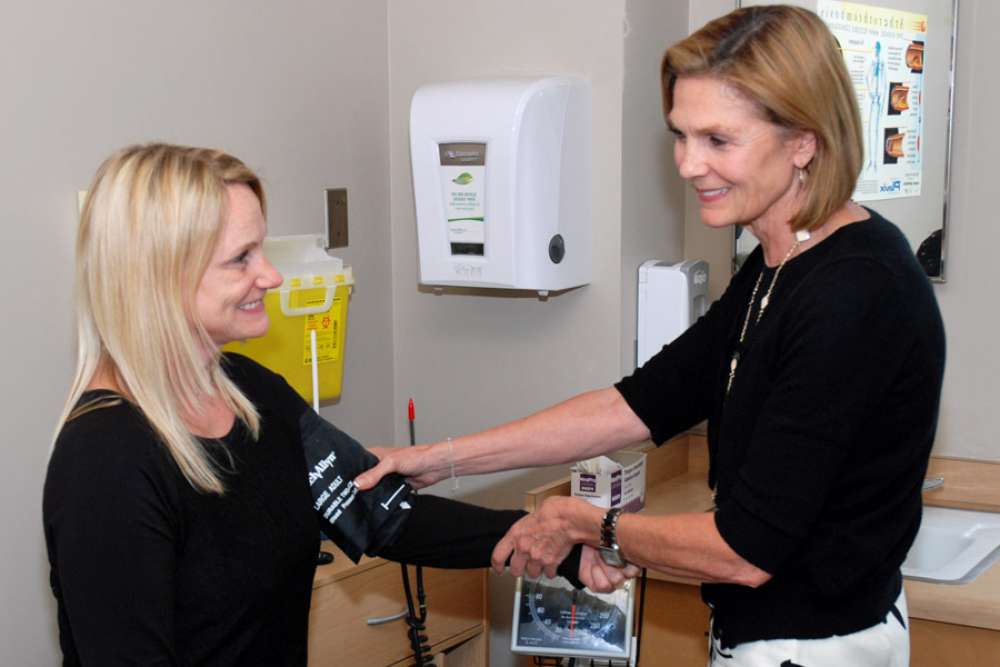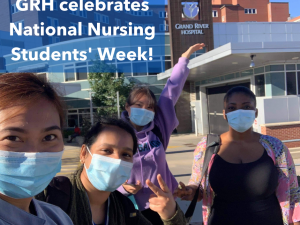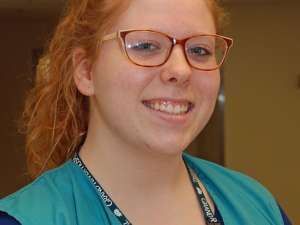A stroke is serious business. When the warning signs appear, you need to dial 9-1-1 right away.
Once the immediate danger has passed and WRHN’s emergency department completes an assessment, some patients don’t need to be admitted to hospital. But they will need on-going follow-up and care.
If you’re one of these people, you’re in good hands with Tammy Tebbutt and her colleagues in the secondary stroke prevention clinic (SSPC). She’s worked in stroke care at WRHN for the past 13 years.

Tammy is part of the secondary stroke prevention clinic in WRHN’s Kaufman building at the KW Campus. The clinic gives patients the knowledge and tools to prevent another transient ischemic attack (TIA) or even a much more serious stroke from happening.
The team associated with the secondary stroke prevention clinic is passionate about helping patients through the stroke system and getting them the care they need fast. They are also very interested in seeing stroke outcomes improve.
---
Who benefits from the secondary stroke prevention clinic?
The SSPC is an outpatient clinic for people in Waterloo Wellington who have experienced signs and symptoms of a recent minor stroke or TIA.
A TIA is like a stroke, producing similar symptoms (vision changes, weakness or numbness, dizziness, trouble speaking, severe headache). It tends to last for a shorter period, but it’s a strong warning to take further action.
Urgent patients are seen in the clinic within one to three days of receiving the referral. We require a referral from a physician or nurse practitioner.
What are people most worried about when they meet you? How do you help them through the stroke journey?
Patients are worried about having another TIA or full blown stroke. The clinic is able to provide early assessments, fast access to diagnostic tests and provide education to patients and family members about managing and reducing their risks of having a stroke.

How can people reduce their risk of having a stroke?
A healthy lifestyle is great prevention medicine. Steps anyone can take include:
- Controlling high blood pressure;
- Lowing cholesterol and saturated fat in one’s diet;
- Not using tobacco;
- Controlling diabetes;
- Eating well, especially lots of fruits and veggies;
- Regular exercise;
- Making sure you only drink a little alcohol, or not drinking at all.
Studies show that 80 per cent of strokes can be prevented. It's important to work with healthcare professionals to lower your personal risk. (National Stroke Association)
What do you love about this job?
It is rewarding knowing that we provide a valuable service to the community. This clinic reduces the need for hospital admissions and prevents many patients from having a full blown stroke.
It has been extremely fulfilling to see the evolution of a fully integrated stroke system across Waterloo Wellington which provides best practice care. It is also rewarding knowing that patient outcomes have improved which is highlighted in our stroke report card metrics. We have improved our times for seeing urgent patients within 24 to 72 hours of receiving the referral and are now meeting provincial benchmarks. This is important because your chance of having a stroke after a TIA is highest in the first 72 hours following the first event.
Aside from the symptoms listed above, what are the tips you recommend for watching out for a stroke?
The best thing is remember the FAST approach and call 9-1-1 if you have any of these symptoms, all of which appear suddenly:
- FACE: is it drooping?
- ARMS: can you raise them both over your head?
- SPEECH: is it slurred?
- TIME to call 9-1-1 right away.


 GRH Celebrates National Nursing Students' Week
GRH Celebrates National Nursing Students' Week Katie Cameron: caring through HELP
Katie Cameron: caring through HELP Making a lasting impact near and far: Supporting patient care through the Weeneebayko Area Health Authority
Making a lasting impact near and far: Supporting patient care through the Weeneebayko Area Health Authority